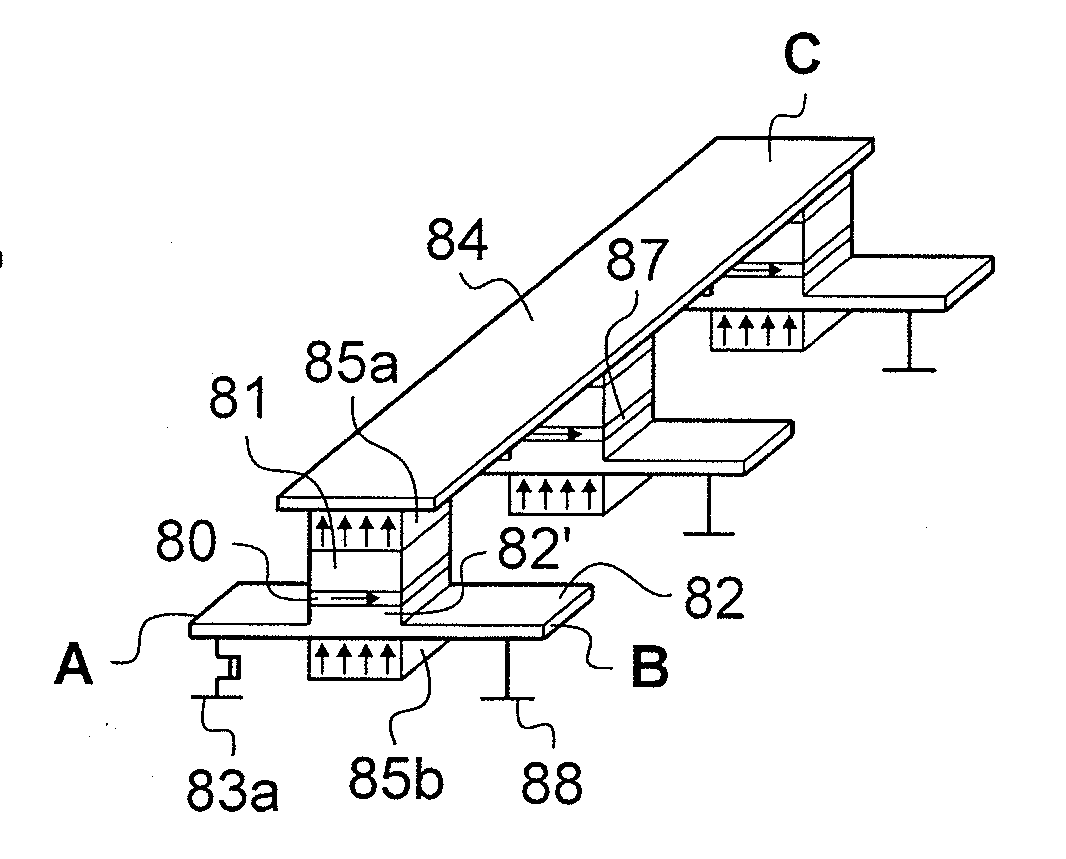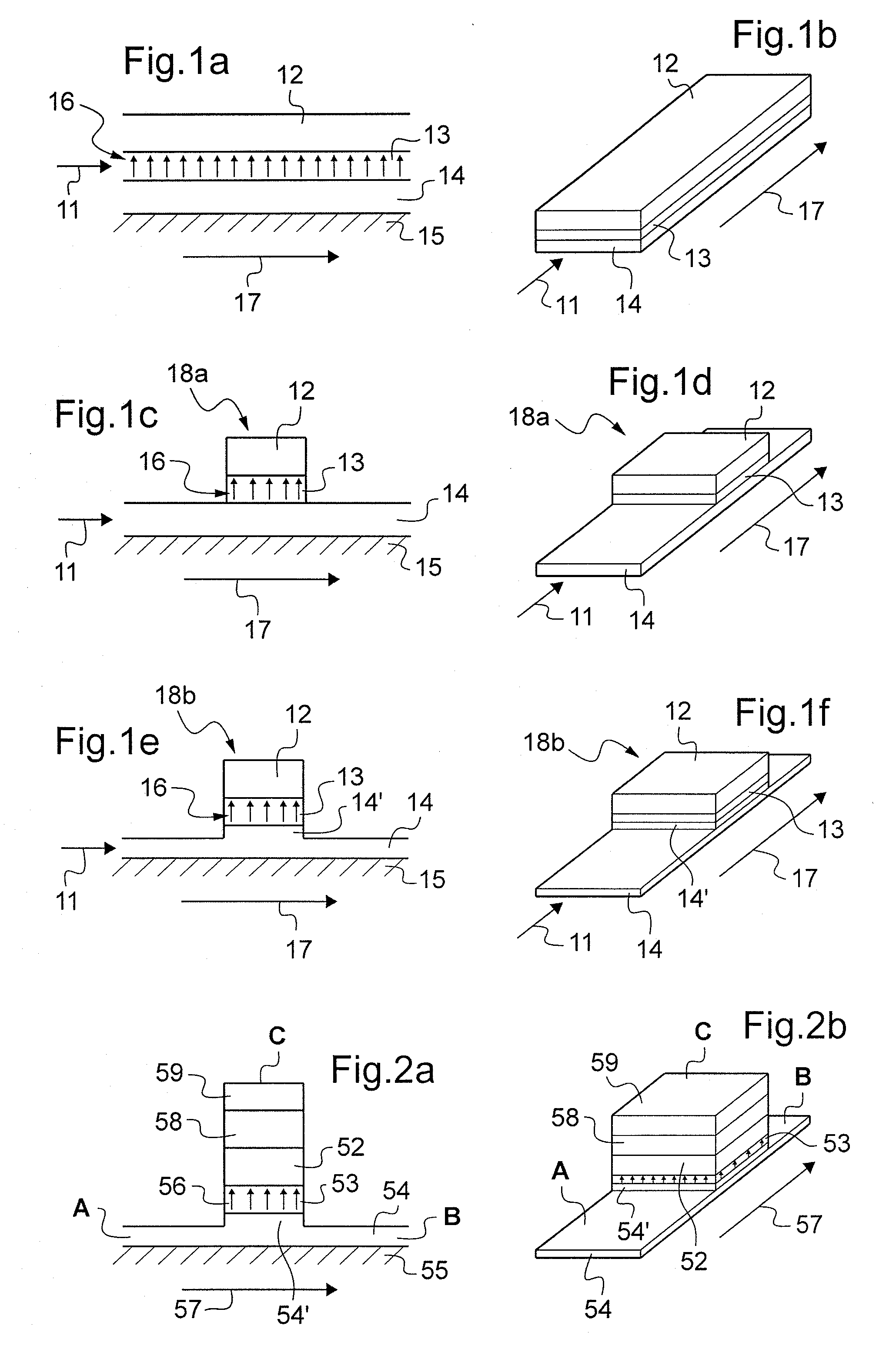Writable Magnetic Memory Element
a magnetic memory element and magnetic field technology, applied in the field of magnetic elements, can solve the problems of increasing difficulty, affecting the operation of the device,
- Summary
- Abstract
- Description
- Claims
- Application Information
AI Technical Summary
Benefits of technology
Problems solved by technology
Method used
Image
Examples
Embodiment Construction
[0042]The stack implemented in the context of the present invention, i.e. a central magnetic layer sandwiched between two outer layers that are not magnetic, and at least one of which is conductive, the two outer layers being of different materials, has the effect of creating inversion asymmetry that generates a non-compensated electric field in the magnetic central layer. The electrons propagating in this electric field are subjected in their own frame of reference to a magnetic field known as the Rashba field {right arrow over (H)}R of direction that is perpendicular both to the current and to the electric field. This magnetic field is thus applied to the conduction electrons.
[0043]The inventors have shown that an effective magnetic field resulting from the Rashba field and the exchange interaction coupling the spin of the itinerant and localized electrons is applied on the local magnetization. Thus, the article by Joan Mihai Miron et al. entitled “Current-driven spin torque induc...
PUM
 Login to View More
Login to View More Abstract
Description
Claims
Application Information
 Login to View More
Login to View More - R&D
- Intellectual Property
- Life Sciences
- Materials
- Tech Scout
- Unparalleled Data Quality
- Higher Quality Content
- 60% Fewer Hallucinations
Browse by: Latest US Patents, China's latest patents, Technical Efficacy Thesaurus, Application Domain, Technology Topic, Popular Technical Reports.
© 2025 PatSnap. All rights reserved.Legal|Privacy policy|Modern Slavery Act Transparency Statement|Sitemap|About US| Contact US: help@patsnap.com



